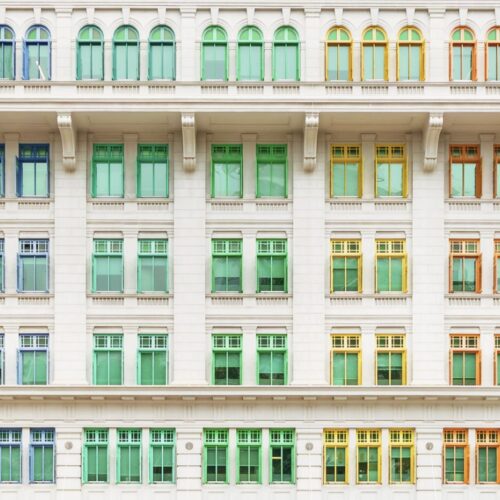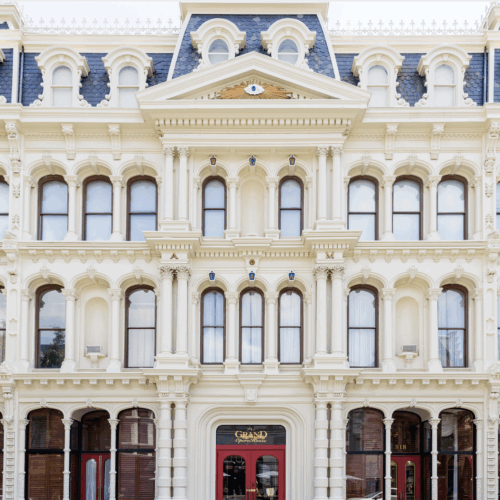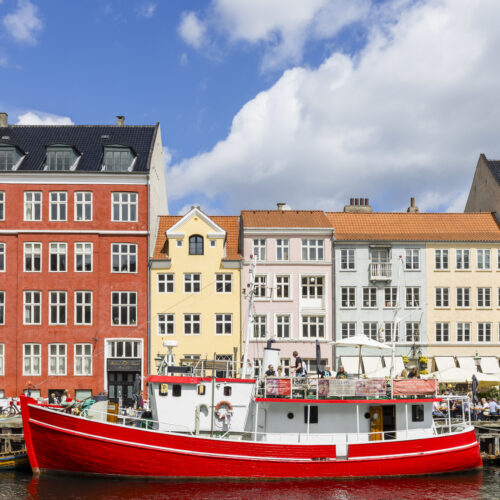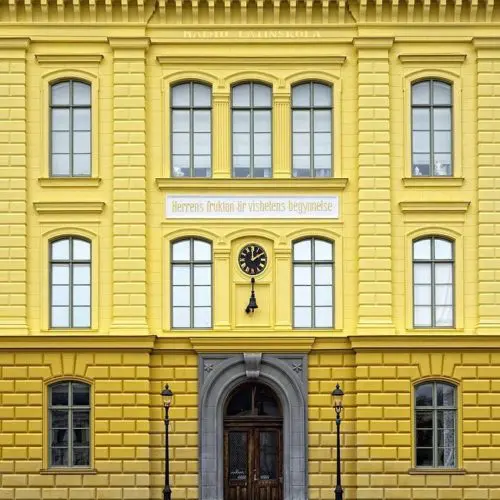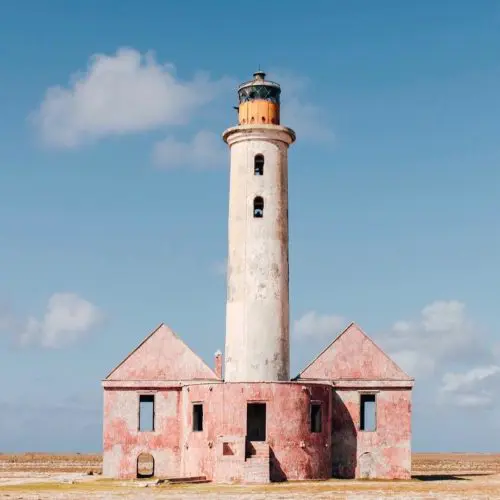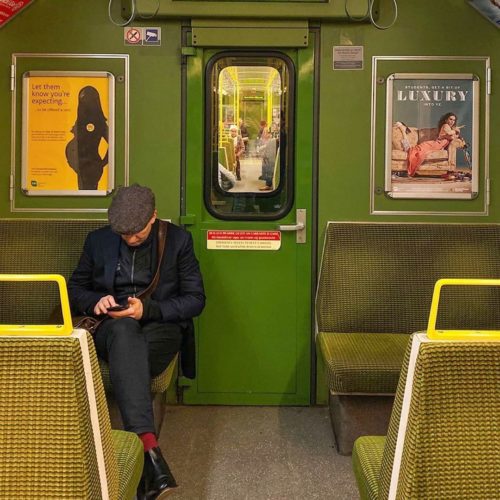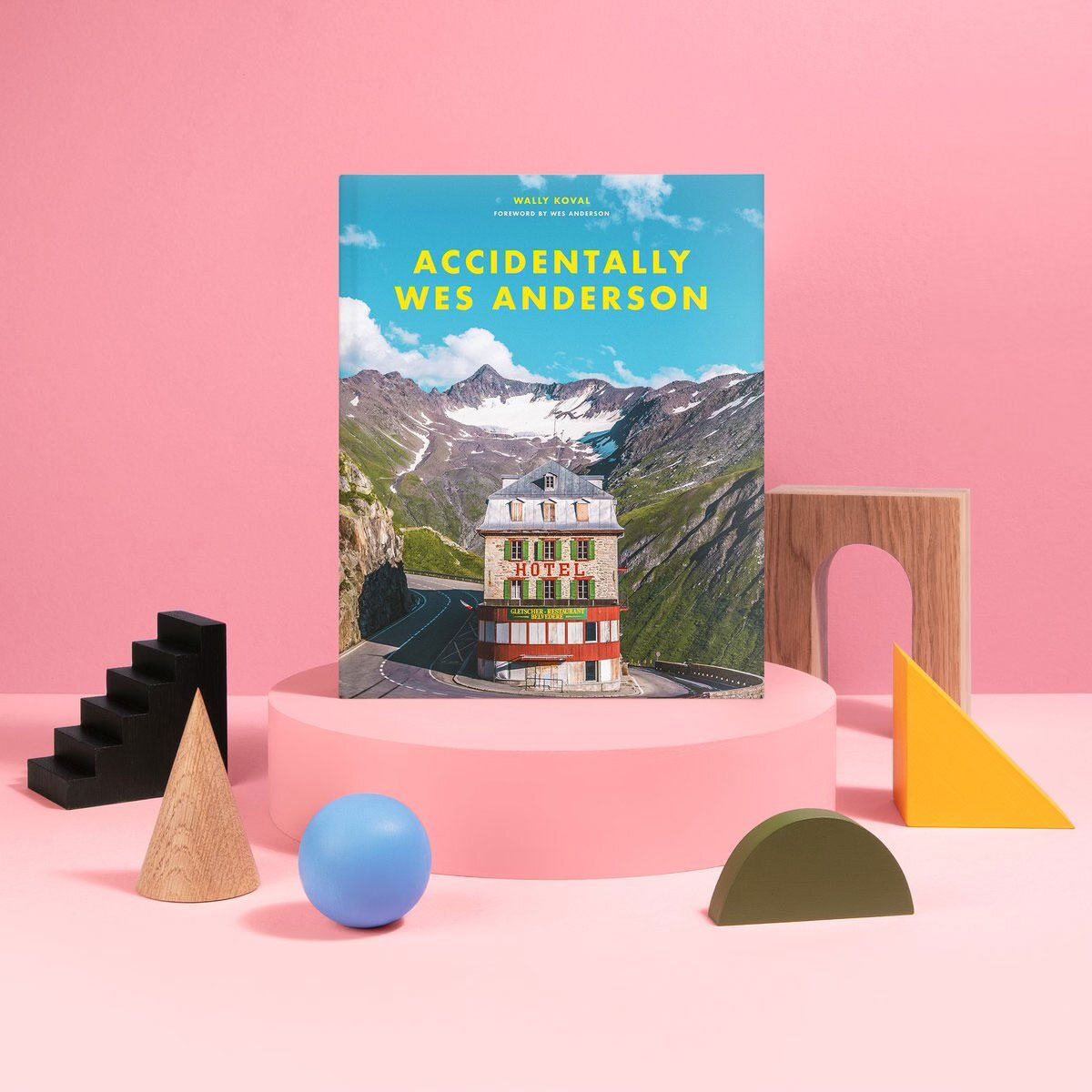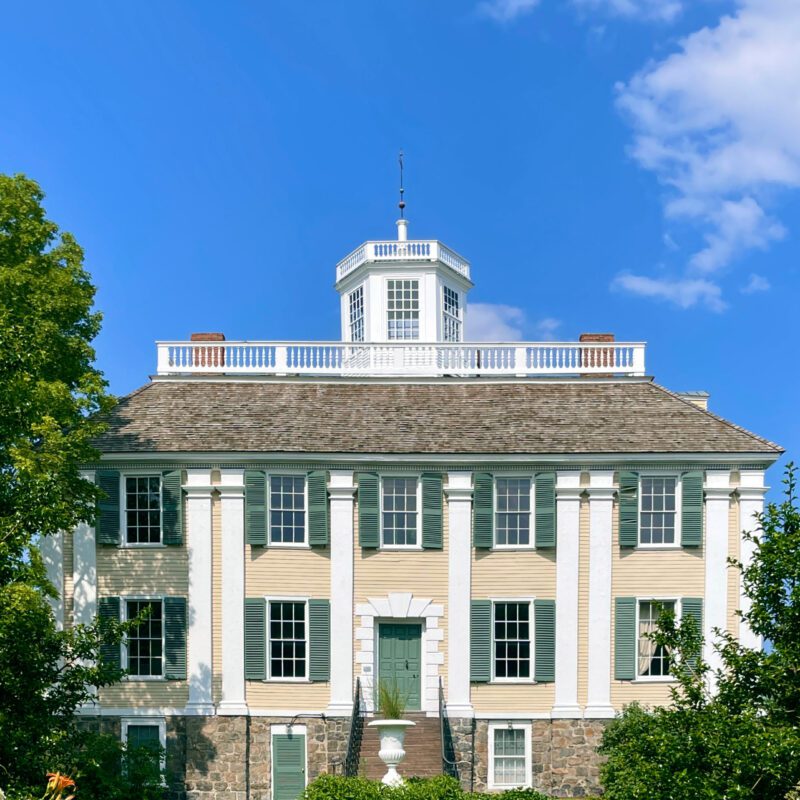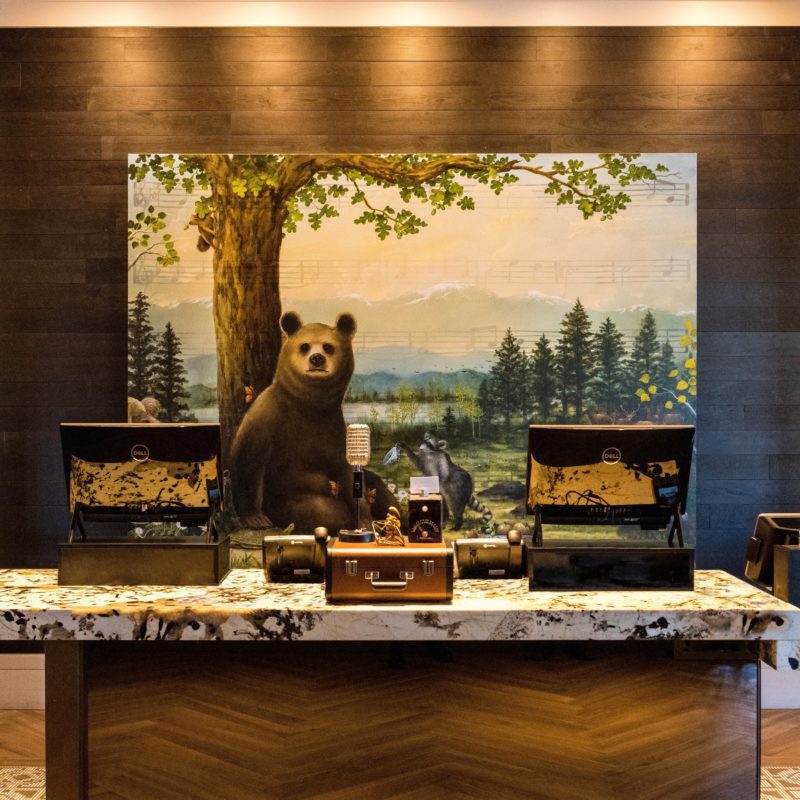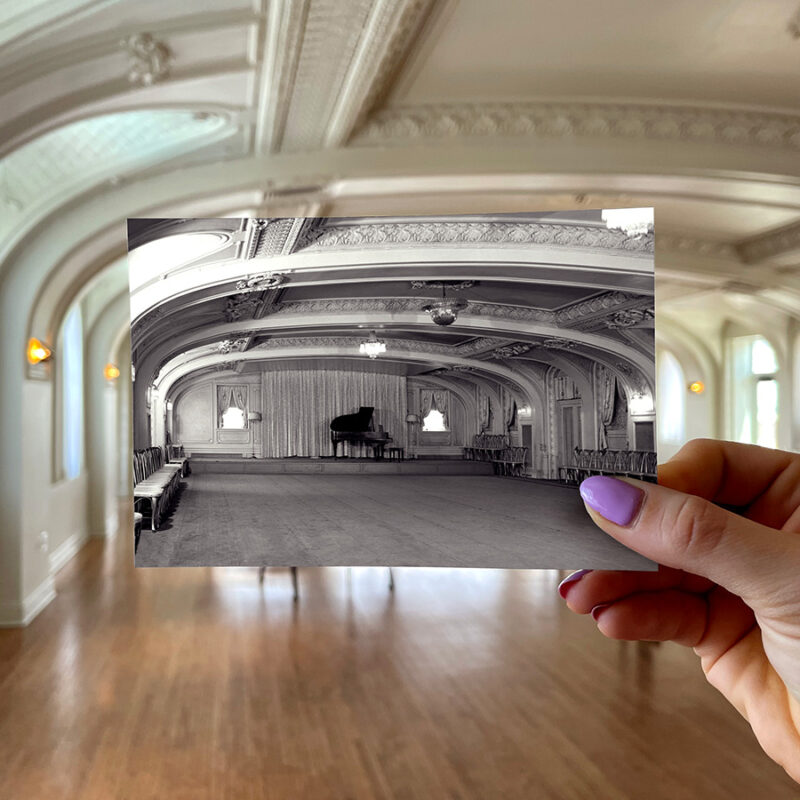Entering this Detroit skyscraper, a feast for the eyes takes hold through a bespeckled ceiling and triangular archways that evoke a lost ancient temple. However, this geometrical wonder “guards” more than just meticulously decorated interiors. At one time in its history, the city’s “Cathedral of Finance” was protecting something top secret.
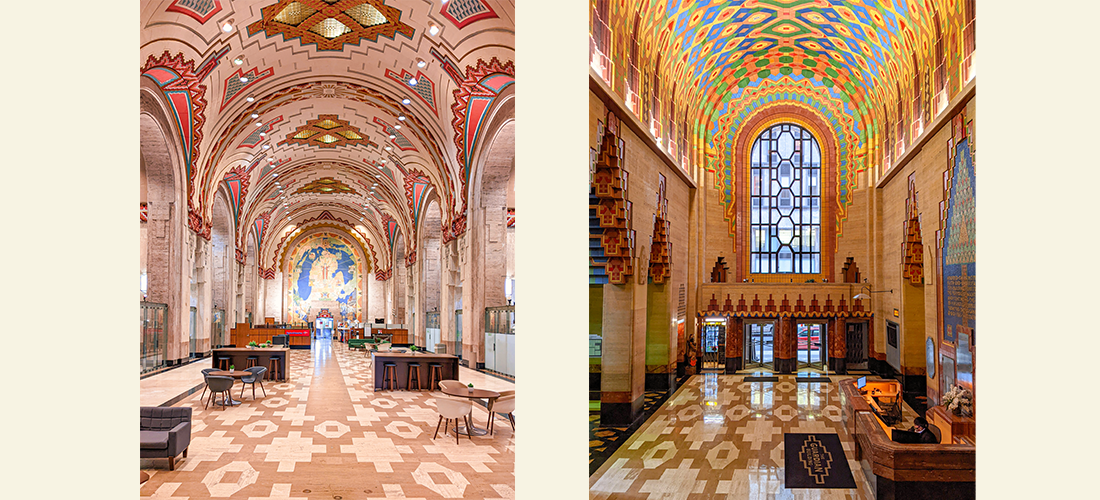
📸: Marco Fratus
Built for the Union Trust Company in 1929, the structure was designed by Wirt C. Rowland with an ode to all things Michigan in mind. Overseeing not only the exterior construction, Rowland brought in local artisans to fill the lobby and halls of the 40 story structure with Michigan-made craftsmanship. Many of the colorful tiles making up the ceilings and arches came from Mary Chase Stratton’s Pewabic Pottery of Detroit, which still exists to this day. Michigan artist Ezra Miller’s colorful mural of the mitten-shaped state looks over the main atrium. All of these deliberate details were meant to evoke Union Trust’s strength and stability, opening just in time for the Wall Street Crash of 1929. Oops.
While Union Trust didn’t inhabit their building for long (they merged with the Guardian Detroit Union Group, hence the building’s name), the unique downtown structure has had equally unusual tenants. During World War II, the Guardian Building was used as the U.S. Army Command Center for wartime production. Now brightly lit, during that time the Guardian was not illuminated at night in order to not attract attention to its militaristic inhabitants if the city were ever in danger from an aerial night raid.
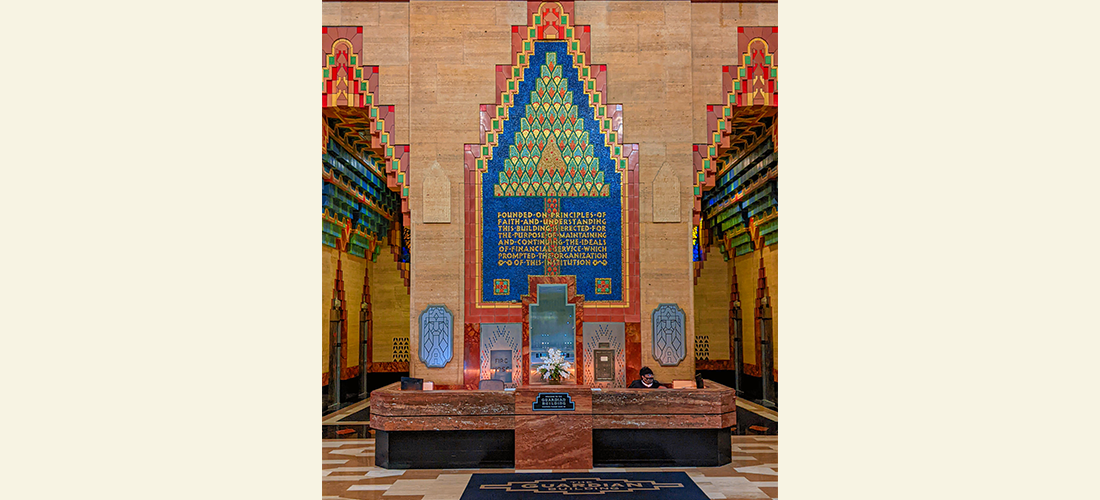
📸: Marco Lino
Upon the completion of his Art Deco masterpiece, Wirt C. Rowland stated, “We no longer live in a leisurely age…the impression must be immediate, strong and complete. Color has this vital power.” Now almost 100 years later, the Guardian’s impressive colors continue to be vital to the landmark’s attractiveness. One is immediately impressed, too.

